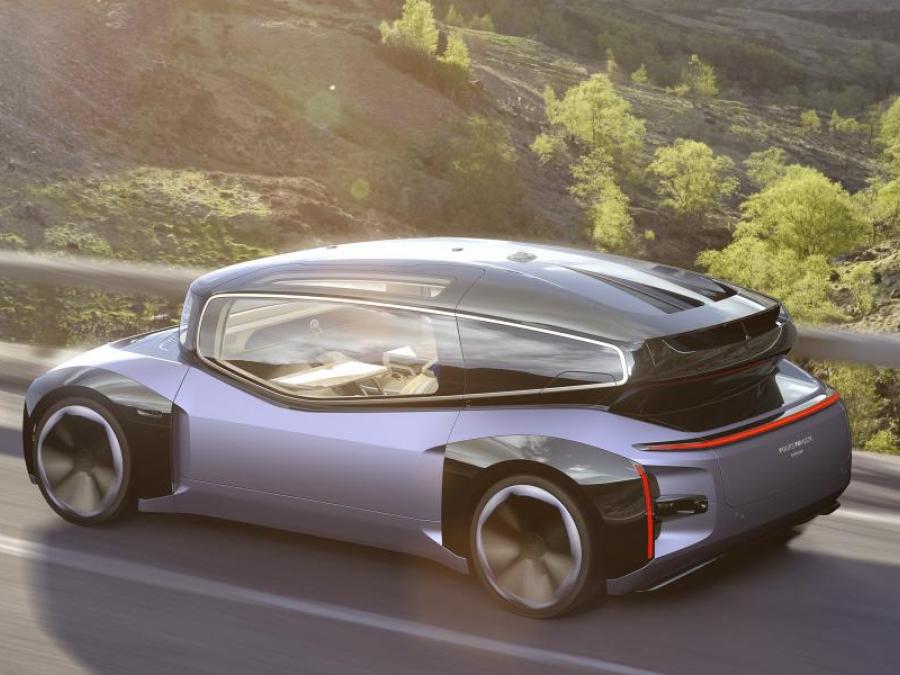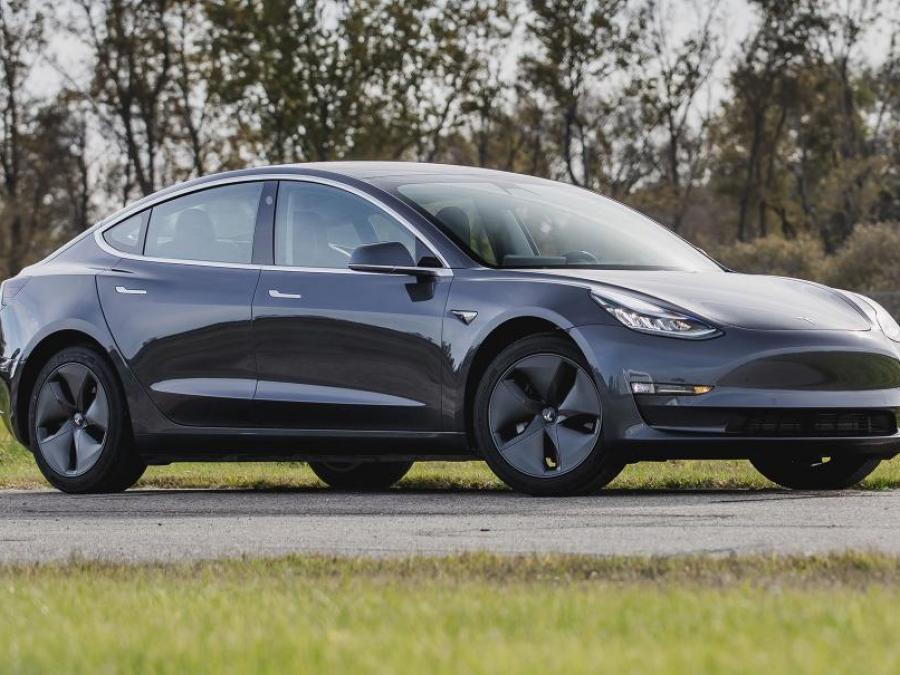
Volkswagen Group will present the concept of an electric autonomous car called Gen.Travel as part of the Chantilly Arts & Elegance exhibition, which will be held on September 24 and 25 in Chantilly, France. According to the developers, the conceptual shuttle, devoid of controls, embodies the vision of the German company's future changes in the automotive industry. There can be only two places in the car, which are laid out in beds.
Gen.Travel received a futuristic design, doors opening in the style of "butterfly wings", panoramic windows and full LED optics. On the exterior, the creators used matte and black glass finishes, as well as natural and recycled materials. Thanks to the smart lighting system in the interior, you can set the cold or warm atmospheric light.
Another feature of Gen.Travel is the modular cabin design, which can be adapted to different situations. Inside can accommodate up to four adult passengers. If you have a night trip, you can fold the seats, making them two beds.
In addition, passengers have access to an augmented reality interface, which, with the help of special glasses, allows them to access additional information about the trip. VR also allows the use of digital content.
The concept lacks pedals and a steering wheel. The car's controls are systems located on the center console that allow you to adjust the media system, seat position and climate control. As planned, such a car should be completely autonomous. Details of the electric power plant at Volkswagen have not yet been disclosed.
In mid-August, an unusual concept car was developed by Lincoln. Experts have developed an autonomous electric car for the Pebble Beach Contest of Elegance.

A record recall campaign has been announced in the US.
Tesla is conducting another mass recall of electric cars in the United States. This time, the cause was a problem with power windows: it turned out that 1.1 million cars of the brand fail the reverse movement function. This means that if an obstacle is detected between the frame and the glass, the mechanism will not automatically lower the glass. This in turn can cause injury, according to the US National Highway Traffic Safety Administration (NHTSA).
According to NHTSA, a full Tesla recall campaign is still not needed: the problem is in the software of electric cars, which will be updated over the air via over-the-air (OTA). The power windows of the 2017-2022 Tesla Model 3, 2020-2021 Model Y, and the 2021 and 2022 Model S and Model X can be dangerous.
Tesla, in turn, said that it is not aware of any warranty claims, accidents, injuries or deaths related to the failed reverse motion function. The NHTSA also emphasizes that the closing window of such a function can pinch the limbs of the driver or passenger, which can lead to injury.
In August, Tesla tested electric windows and found that the reverse function was even more sensitive to obstacles than required. However, more extensive pressure testing of the regulator showed the opposite: power windows do not meet safety requirements. From September 13, all cars ready for delivery to customers began to be equipped with new software in which this problem is solved.
Tesla has come under scrutiny from the NHTSA in recent years. Of particular interest to the regulator is the autopilot of electric cars, the shortcomings of which lead to emergency situations. In August, one of the owners of Tesla filed a lawsuit due to the fact that the electronics suddenly stopped the car in the middle of the road. According to NHTSA, more than 750 car owners have complained about this behavior of the autopilot.

The off-road vehicle earned only one star in testing.
Non-profit organization Latin NCAP, which specializes in testing cars for the South American market, conducted a series of crash tests on two crossovers produced in Brazil. Experts tested the safety of Honda WR-V and Volkswagen Nivus subcompact SUVs. Both cars experienced a frontal impact at a speed of 64 kilometers per hour, side collisions with a cart and a pole. The results were the opposite, and the Honda model failed the crash test.
The Honda WR-V failed miserably. For the protection of adult passengers, the crossover earned 16.41 points, or 41 percent of the maximum result. In a frontal impact, the driver and passenger's legs and chest are poorly protected, and in a side impact, there is a risk of serious chest injury.
For child protection, the car received 19.92 points (40 percent of the maximum result). The car showed good results in protecting pedestrians: 28.23 points (59 percent). During crash tests, experts found that the seat belts do not comply with UN and Latin NCAP rules, and a side impact on a pole was not carried out at all due to the lack of side airbags. As a result, the crossover received only one star out of five possible.
The subcompact Volkswagen Nivus, on the contrary, coped with crash tests perfectly, earning the maximum number of stars. For the protection of adults and children, the crossover received 36.99 (92%) and 44.87 points (92%), since the car is already equipped with six airbags as standard. At the same time, for the protection of pedestrians during a collision, the car received even less points than Honda - 23.4 (49%).
In early September, the updated Toyota Tundra XK70 received the highest safety rating during crash tests. The full-size pickup was tested during collisions and rollovers.















